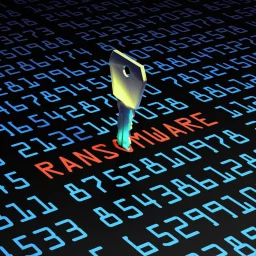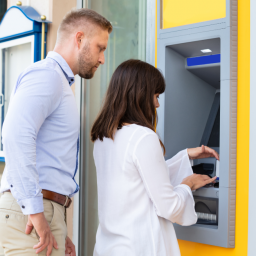
What You Need to Know About Payment Security: A Guide for Merchants and Consumers
Fraudsters are continuously looking for new ways to break into networks and steal data. Notwithstanding these reservations, customers want to pay for services and products using their preferred method of payment in a timely and smooth manner. Internet shopping has grown in popularity in recent years, as many people find it more convenient to purchase from the comfort of their own homes. Internet retailers sell almost anything, including food, clothing, jewellery, technology, and other trinkets. Nevertheless, do they offer online payment security?
How can I tell if an online payment is safe? How can you safeguard yourself against online payment security breaches when the threats are so prevalent? What are the most effective strategies for increasing one’s protection against unsafe online payments?
Online payment security is concerned with safeguarding your company’s and your customers’ personal information. We’ll provide you some advice on how to make your payments more secure in this blog article. We’ll also go through some of the most frequent con games that people fall for. Thus, if you want to secure your data and your money, keep reading!
Three Key Factors to Ensure Safe Online Payments
People are increasingly adopting online payments to acquire products and services as the globe moves online. But what are the most important aspects to consider while completing an online payment? In this post, we’ll look at three important aspects to consider before completing an online payment. Understanding these variables will allow you to ensure that your transactions are as secure as possible.
1. Fraud Management
Businesses may need to change their payment methods or require further consumer identification verification to prevent fraud. If a company’s credit card processing rights are withdrawn due to a high level of fraud, the company’s reputation will suffer.
Retailers must monitor suspicious activity and notify customers of probable fraudulent behavior in order to prevent fraud. When someone tries to use an unauthorized credit card or make an unauthorized transaction on your website or mobile app, you can notify them by email or SMS.
Retailers should also verify customer orders before shipping them out so that any fraudulent activity is detected early on and losses due to fraud management are minimized.
Fraud management is a highly specialized field that requires experts who understand how criminals operate and how to prevent them from doing so.
2. Security Management
To prevent fraudsters from stealing vital personal and financial data, retailers must guarantee that their payment systems are secure ways to pay online.
The Payment Card Industry Data Security Standard (PCI DSS) is a collection of security guidelines intended to safeguard credit card information in the case of a data breach. According to the PCI DSS, firms must maintain a secure environment for processing, storing, and sending cardholder data.
Retailers should do regular risk assessments and vulnerability checks on their systems in addition to implementing the PCI DSS. This assists in identifying any potential weak places where thieves could obtain access to sensitive information or exploit system weaknesses.
3. Compliance Management
The purpose of regulators or individual governments is to protect businesses and individuals from data breaches and privacy violations. Traders must be aware of their responsibilities and ensure that they are met regardless of where they do business.
This can include ensuring that merchants have rules in place to secure consumer data, preventing hacking or fraud on their websites, and giving merchants with the tools they need to implement these policies on their own.
For example, if a store has a policy against fraudulent transactions, they may want to give customers the ability to challenge a charge if they believe it was done without their consent. Whenever a dispute arises, merchants should be able to handle it swiftly and effectively. This aids in the elimination of bogus claims while also giving customers with prompt response.
4 Safe Ways To Pay Online
Here are some of the safest ways that you can protect yourself from fraud when making purchases online:
Debit Cards:
Accepting debit card payments can also help small business owners because they are subject to PCI compliance.
Using a debit card from an unfamiliar IP address can activate identity verification checks, making it one of the most secure online payment alternatives available to such clients.
In addition, neither Visa nor Mastercard debit or credit cards hold cardholders liable for any illegal transactions.
Credit Cards:
Payment compliance standards, also known as payment card industry compliance or PCI compliance, restrict credit card usage, making them particularly secure online payment choices for small business owners.
Because credit card purchases do not immediately drain the customer’s bank account, credit cards will help your clients as well. Instead, the credit card company, not the customer, provides the first funding.
Mobile Wallets:
Digital wallets such as Apple Pay and Amazon Pay are often regarded as among the greatest alternatives for online payment security.
Assume your customers must authenticate their transaction using a fingerprint or a PIN.
In that instance, your company will benefit from these payment methods because they conceal credit and debit card information.
Wire Transfers:
When the banks of your organisation and the client are well-known, wire transfers are one of the safest ways to pay online.
This is because a bank with a good reputation does not have a history of data breaches or other security flaws, implying that this bank has active measures in place to avoid fraud and other online payment security issues.
9 Steps for Businesses To Assure Online Payment Security
1. Be compliant with PCI DSS
Before doing anything else to assure safety, make sure your payment system conforms with PCI DSS, a globally recognized standard for secure card payments that comprises 12 security requirements.
Although PCI compliance is required for all respectable processing companies, it is nevertheless worthwhile to learn about them because noncompliance might result in legal action. Ask with your processing provider about PCI compliance standards.
It can be difficult if your company handles PCI compliance on its own. Several processors handle everything from transaction tracking to credit card data storage.
2. SSL Protocol
SSL protocol only affects businesses who offer items and services online. The phrase secure socket layer (SSL) refers to an internet security encryption protocol. Even if you didn’t realize it, you’ve undoubtedly seen SSL.
If a website’s URL begins with HTTPS, it is most likely secured with SSL. Any URL that begins with HTTPS requires an SSL certificate. Another well-known SSL symbol is the padlock.
Most payment processors will almost certainly feature an SSL-certified online payment portal. Only if you develop your own website should you be concerned about security.
3. Ensure Data Encryption
The third step in improving online payment security is to encrypt consumer financial information. Identity theft is on the rise, and if the data is not encrypted, hackers can easily steal it thanks to unprotected WIFI networks. Your company’s online transaction websites should be legitimate and run by legitimate people.
Data encryption ensures that your private information is only accessible to authorized parties and does not come into the hands of unauthorized individuals. It also considerably reduces the possibility of a password being stolen. Transactions were more secure as a result of all of these technologies collaborating.
4. Tokenization
Tokenization adds another layer of security to the customer’s payment information. When a payment processor offers tokenization, a program uses the payment data to construct a random string of numbers.
Hackers would not utilize this data because it has been tokenized. As a result, online payment tokenization is a very valued security feature. If you’re still looking for a payment processor, find out if they use tokenization.
It is always a good idea to have a second line of defense for online payment security.
5. Address Verification Service
You’ve had to enter your billing address on a website, haven’t you? This billing address is used to confirm your credit card. If your billing address matches the one on file with your credit card company, transactions can be performed.
The address verification service is one of the most extensively utilized security procedures for online payment security (AVS). It is used by practically every processor since it is so simple to construct. This minimizes not only the possibility of fraudulent charges being processed, but also the likelihood of a charge being refused.
6. Implement 3D Security
3D Secure is an authentication method that prevents unauthorised card use to avoid chargebacks in the event of fraudulent transactions.
Merchants, card networks, and financial institutions communicate confidential information to protect the security of their transactions. 3D Secure is a simple way for retailers to comply with new EU laws requiring strong consumer verification.
This additional degree of protection is given with every online payment to ensure that the correct person is using the card. Several payment processors, although not all, provide this feature.
7. Request the CVV
The Card Verification Value (CVV) can be used over the phone or online to authenticate card transactions that aren’t physically present.
Businesses can validate a transaction in circumstances when credit card numbers have been stolen by asking for information that is only available on the card.
8. Conduct Security Assessments
Finally, execute annual security evaluations of your system by professionals who can perform penetration tests and vulnerability assessments to explore your network from the standpoint of a hacker.
Their role is to manually test the system, look for weaknesses, and provide guidance on how to determine whether online payment is secure. They can also detect unencrypted data leakage and security holes in wireless and network security solutions.
9. Train Employees
Employees should be educated so that they can recognise and respond appropriately to circumstances in which they are involved. When employees are conversant with secure online payment alternatives, they may detect fraudulent activity in real time and prevent security breaches.

















